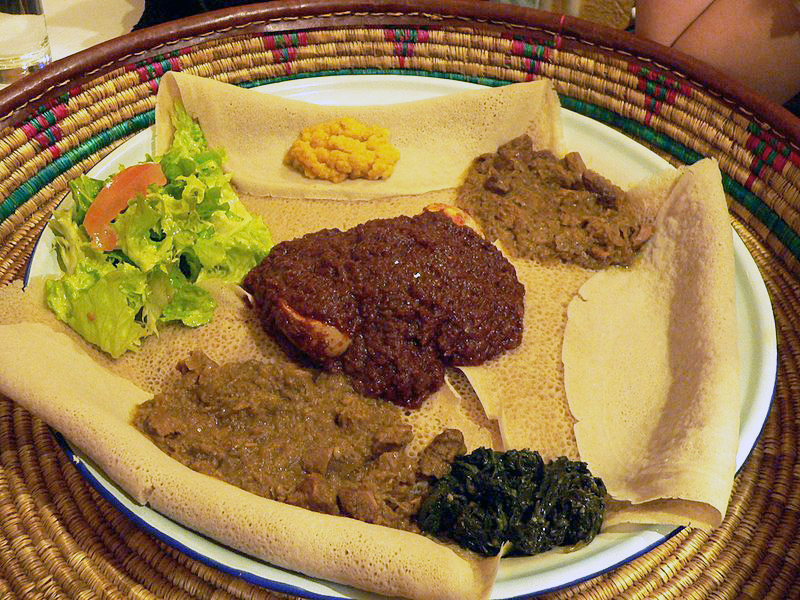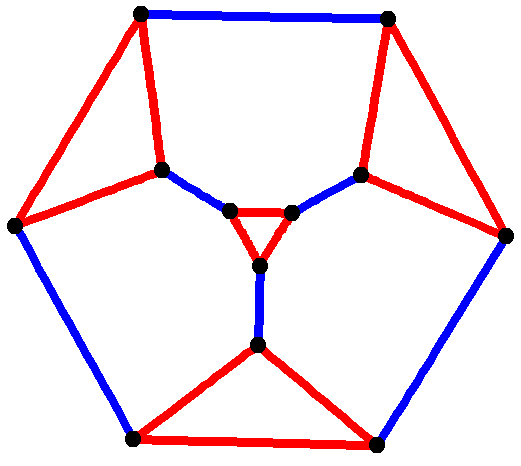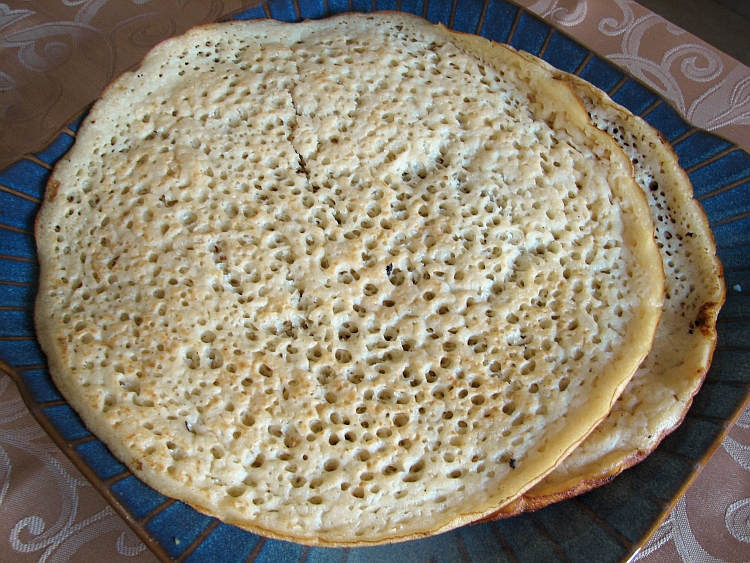|
Pancake Sorting
Pancake sorting is the mathematical problem of sorting a disordered stack of pancakes in order of size when a spatula can be inserted at any point in the stack and used to flip all pancakes above it. A ''pancake number'' is the minimum number of flips required for a given number of pancakes. In this form, the problem was first discussed by American geometer Jacob E. Goodman. A variant of the problem is concerned with ''burnt'' pancakes, where each pancake has a burnt side and all pancakes must, in addition, end up with the burnt side on bottom. All sorting methods require pairs of elements to be compared. For the traditional sorting problem, the usual problem studied is to minimize the number of comparisons required to sort a list. The number of actual operations, such as swapping two elements, is then irrelevant. For pancake sorting problems, in contrast, the aim is to minimize the number of operations, where the only allowed operations are reversals of the elements of some ... [...More Info...] [...Related Items...] OR: [Wikipedia] [Google] [Baidu] [Amazon] |
Pancake Sort Operation
A pancake, also known as a hotcake, griddlecake, or flapjack, is a flat type of batter bread like cake, often thin and round, prepared from a starch-based Batter (cooking), batter that may contain eggs, milk, and butter, and then cooked on a hot surface such as a griddle or frying pan. Archaeological evidence suggests that pancakes were probably eaten in prehistoric societies. The pancake's shape and structure varies worldwide. In England, pancakes are often Leavening agent, unleavened and resemble a crêpe. In Scotland and North America, a leavening agent is used (typically baking powder) creating a thick fluffy pancake. A ''crêpe'' is a thin pancake of Brittany, Breton origin cooked on one or both sides in a special pan or crepe maker to achieve a lacelike network of fine bubbles. A well-known variation originating from southeast Europe is palatschinke, a thin moist pancake fried on both sides and filled with jam, cream cheese, chocolate, or ground walnuts, but many other f ... [...More Info...] [...Related Items...] OR: [Wikipedia] [Google] [Baidu] [Amazon] |
NP-complete
In computational complexity theory, NP-complete problems are the hardest of the problems to which ''solutions'' can be verified ''quickly''. Somewhat more precisely, a problem is NP-complete when: # It is a decision problem, meaning that for any input to the problem, the output is either "yes" or "no". # When the answer is "yes", this can be demonstrated through the existence of a short (polynomial length) ''solution''. # The correctness of each solution can be verified quickly (namely, in polynomial time) and a brute-force search algorithm can find a solution by trying all possible solutions. # The problem can be used to simulate every other problem for which we can verify quickly that a solution is correct. Hence, if we could find solutions of some NP-complete problem quickly, we could quickly find the solutions of every other problem to which a given solution can be easily verified. The name "NP-complete" is short for "nondeterministic polynomial-time complete". In this name, ... [...More Info...] [...Related Items...] OR: [Wikipedia] [Google] [Baidu] [Amazon] |
Vertex-transitive Graph
In the mathematics, mathematical field of graph theory, an Graph automorphism, automorphism is a permutation of the Vertex (graph theory), vertices such that edges are mapped to edges and non-edges are mapped to non-edges. A graph is a vertex-transitive graph if, given any two vertices and of , there is an automorphism such that :f(v_1) = v_2.\ In other words, a graph is vertex-transitive if its automorphism group Group action (mathematics), acts Group_action#Remarkable properties of actions, transitively on its vertices.. A graph is vertex-transitive if and only if its graph complement is, since the group actions are identical. Every symmetric graph without isolated vertex, isolated vertices is vertex-transitive, and every vertex-transitive graph is Regular graph, regular. However, not all vertex-transitive graphs are symmetric (for example, the edges of the truncated tetrahedron), and not all regular graphs are vertex-transitive (for example, the Frucht graph and Tietze's ... [...More Info...] [...Related Items...] OR: [Wikipedia] [Google] [Baidu] [Amazon] |
Cayley Graph
In mathematics, a Cayley graph, also known as a Cayley color graph, Cayley diagram, group diagram, or color group, is a Graph (discrete mathematics), graph that encodes the abstract structure of a group (mathematics), group. Its definition is suggested by Cayley's theorem (named after Arthur Cayley), and uses a specified generating set of a group, set of generators for the group. It is a central tool in combinatorial group theory, combinatorial and geometric group theory. The structure and symmetry of Cayley graphs make them particularly good candidates for constructing expander graphs. Definition Let G be a group (mathematics), group and S be a generating set of a group, generating set of G. The Cayley graph \Gamma = \Gamma(G,S) is an Edge coloring, edge-colored directed graph constructed as follows: In his Collected Mathematical Papers 10: 403–405. * Each element g of G is assigned a vertex: the vertex set of \Gamma is identified with G. * Each element s of S is assigned a ... [...More Info...] [...Related Items...] OR: [Wikipedia] [Google] [Baidu] [Amazon] |
Graph Embedding
In topological graph theory, an embedding (also spelled imbedding) of a graph G on a surface \Sigma is a representation of G on \Sigma in which points of \Sigma are associated with vertices and simple arcs (homeomorphic images of ,1/math>) are associated with edges in such a way that: * the endpoints of the arc associated with an edge e are the points associated with the end vertices of e, * no arcs include points associated with other vertices, * two arcs never intersect at a point which is interior to either of the arcs. Here a surface is a connected 2-manifold. Informally, an embedding of a graph into a surface is a drawing of the graph on the surface in such a way that its edges may intersect only at their endpoints. It is well known that any finite graph can be embedded in 3-dimensional Euclidean space \mathbb^3.. A planar graph is one that can be embedded in 2-dimensional Euclidean space \mathbb^2. Often, an embedding is regarded as an equivalence class (under home ... [...More Info...] [...Related Items...] OR: [Wikipedia] [Google] [Baidu] [Amazon] |
Girth (graph Theory)
In graph theory, the girth of an undirected graph is the length of a shortest Cycle (graph theory), cycle contained in the graph. If the graph does not contain any cycles (that is, it is a forest (graph theory), forest), its girth is defined to be infinity. For example, a 4-cycle (square) has girth 4. A grid has girth 4 as well, and a triangular mesh has girth 3. A graph with girth four or more is triangle-free graph, triangle-free. Cages A cubic graph (all vertices have degree three) of girth that is as small as possible is known as a -cage (graph theory), cage (or as a -cage). The Petersen graph is the unique 5-cage (it is the smallest cubic graph of girth 5), the Heawood graph is the unique 6-cage, the McGee graph is the unique 7-cage and the Tutte eight cage is the unique 8-cage. There may exist multiple cages for a given girth. For instance there are three nonisomorphic 10-cages, each with 70 vertices: the Balaban 10-cage, the Harries graph and the Harries–Wong graph. Im ... [...More Info...] [...Related Items...] OR: [Wikipedia] [Google] [Baidu] [Amazon] |
Diameter (graph Theory)
In graph theory, the diameter of a connected undirected graph is the farthest distance between any two of its vertices. That is, it is the diameter of a set for the set of vertices of the graph, and for the shortest-path distance in the graph. Diameter may be considered either for weighted or for unweighted graphs. Researchers have studied the problem of computing the diameter, both in arbitrary graphs and in special classes of graphs. The diameter of a disconnected graph may be defined to be infinite, or undefined. Graphs of low diameter The degree diameter problem seeks tight relations between the diameter, number of vertices, and degree of a graph. One way of formulating it is to ask for the largest graph with given bounds on its degree and diameter. For any fixed degree, this maximum size is exponential in diameter, with the base of the exponent depending on the degree. The girth of a graph, the length of its shortest cycle, can be at most 2k+1 for a graph of diameter ... [...More Info...] [...Related Items...] OR: [Wikipedia] [Google] [Baidu] [Amazon] |
Regular Graph
In graph theory, a regular graph is a Graph (discrete mathematics), graph where each Vertex (graph theory), vertex has the same number of neighbors; i.e. every vertex has the same Degree (graph theory), degree or valency. A regular directed graph must also satisfy the stronger condition that the indegree and outdegree of each internal vertex are equal to each other. A regular graph with vertices of degree is called a graph or regular graph of degree . Special cases Regular graphs of degree at most 2 are easy to classify: a graph consists of disconnected vertices, a graph consists of disconnected edges, and a graph consists of a disjoint union of graphs, disjoint union of cycle (graph theory), cycles and infinite chains. A graph is known as a cubic graph. A strongly regular graph is a regular graph where every adjacent pair of vertices has the same number of neighbors in common, and every non-adjacent pair of vertices has the same number of neighbors in common. The smal ... [...More Info...] [...Related Items...] OR: [Wikipedia] [Google] [Baidu] [Amazon] |
Pancake Graph G4
A pancake, also known as a hotcake, griddlecake, or flapjack, is a flat type of batter bread like cake, often thin and round, prepared from a starch-based batter that may contain eggs, milk, and butter, and then cooked on a hot surface such as a griddle or frying pan. Archaeological evidence suggests that pancakes were probably eaten in prehistoric societies. The pancake's shape and structure varies worldwide. In England, pancakes are often unleavened and resemble a crêpe. In Scotland and North America, a leavening agent is used (typically baking powder) creating a thick fluffy pancake. A ''crêpe'' is a thin pancake of Breton origin cooked on one or both sides in a special pan or crepe maker to achieve a lacelike network of fine bubbles. A well-known variation originating from southeast Europe is palatschinke, a thin moist pancake fried on both sides and filled with jam, cream cheese, chocolate, or ground walnuts, but many other fillings—sweet or savoury—can also be us ... [...More Info...] [...Related Items...] OR: [Wikipedia] [Google] [Baidu] [Amazon] |
Pancake Graph G3
A pancake, also known as a hotcake, griddlecake, or flapjack, is a flat type of batter bread like cake, often thin and round, prepared from a starch-based batter that may contain eggs, milk, and butter, and then cooked on a hot surface such as a griddle or frying pan. Archaeological evidence suggests that pancakes were probably eaten in prehistoric societies. The pancake's shape and structure varies worldwide. In England, pancakes are often unleavened and resemble a crêpe. In Scotland and North America, a leavening agent is used (typically baking powder) creating a thick fluffy pancake. A ''crêpe'' is a thin pancake of Breton origin cooked on one or both sides in a special pan or crepe maker to achieve a lacelike network of fine bubbles. A well-known variation originating from southeast Europe is palatschinke, a thin moist pancake fried on both sides and filled with jam, cream cheese, chocolate, or ground walnuts, but many other fillings—sweet or savoury—can also be u ... [...More Info...] [...Related Items...] OR: [Wikipedia] [Google] [Baidu] [Amazon] |
Manuel Blum
Manuel Blum (born 26 April 1938) is a Venezuelan-born American computer scientist who received the Turing Award in 1995 "In recognition of his contributions to the foundations of computational complexity theory and its application to cryptography and program checking". Education Blum was born to a Jewish family in Venezuela. Blum was educated at MIT, where he received his bachelor's degree and his master's degree in electrical engineering in 1959 and 1961 respectively. In MIT, he was recommended to Warren S. McCulloch, and they collaborated on some mathematical problems in neural networks. He obtained a Ph.D. in mathematics in 1964 supervised by Marvin Minsky.. Career Blum worked as a professor of computer science at the University of California, Berkeley until 2001. From 2001 to 2018, he was the Bruce Nelson Professor of Computer Science at Carnegie Mellon University, where his wife, Lenore Blum, was also a professor of computer science. In 2002, he was elected to the Unit ... [...More Info...] [...Related Items...] OR: [Wikipedia] [Google] [Baidu] [Amazon] |
David X
David X ( ka, დავით X) (c. 1470s or 1480s –1526) was the second king ('' mepe'') of the Kingdom of Kartli from 1505 to 1525. Associated with the throne as a child, he became king on the death of his father and from then on had to endure invasions from the Kingdom of Imereti and Kingdom of Kakheti. A reformer, he succeeded in subduing the army and destroying the power of the nobles by abolishing the semi-independent principalities that were ruining the unity of the country, before uniting eastern Georgia under a single sceptre. David X is also known to have survived another invasion by Persia, and is thus considered to be the first in a series of eleven kings who fought against their Safavid neighbours over the next two centuries. Life David was born after 1473.. He was the eldest son of King Constantine II of Georgia and his wife, Queen Tamar. In 1488, in the midst of war against the Turkomans, he was associated with his other brothers to his father's throne, bu ... [...More Info...] [...Related Items...] OR: [Wikipedia] [Google] [Baidu] [Amazon] |





